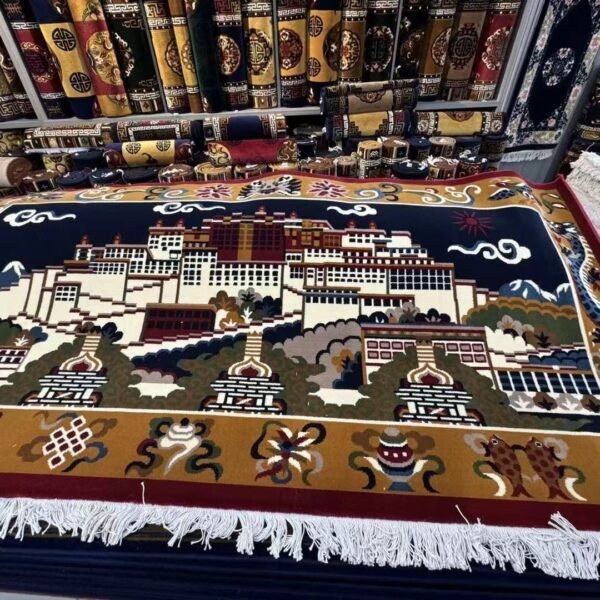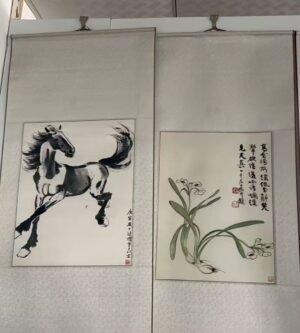Tibetan Carpets, also known as Tibetan Rugs, are a traditional form of handwoven textile art from Tibet, renowned for their vibrant colors, unique patterns, and exceptional craftsmanship. These carpets are not only practical household items but also deeply rooted in Tibetan culture and spirituality.
1. Materials & Weaving Techniques
Tibetan carpets are typically made from highland sheep’s wool, known for its durability, warmth, and softness. The wool is hand-spun, dyed with natural pigments, and woven using a traditional cut-loop technique, which is distinct from Persian or Turkish weaving styles. The process is entirely handmade and can take weeks or even months, depending on the size and complexity.
2. Design & Symbolism
Designs on Tibetan carpets often feature rich symbolism and traditional motifs, such as:
•Dragons, tigers, and snow lions – representing power and protection.
•Floral patterns – symbolizing harmony and nature.
•Buddhist symbols – like the endless knot or lotus flower, expressing spiritual beliefs and blessings.
The color palette is typically bold, with deep reds, blues, golds, and greens.
3. Cultural Significance
Tibetan carpets have been used for centuries in homes, monasteries, and temples. They serve both decorative and functional purposes—as floor coverings, wall hangings, or meditation mats. Each carpet reflects the weaver’s artistry, regional identity, and often spiritual devotion.
4. Modern Appeal
Today, Tibetan carpets are highly valued worldwide for their quality and beauty. They are appreciated not just as traditional artifacts, but also as luxury decor items in contemporary interior design.





评价
目前还没有评价